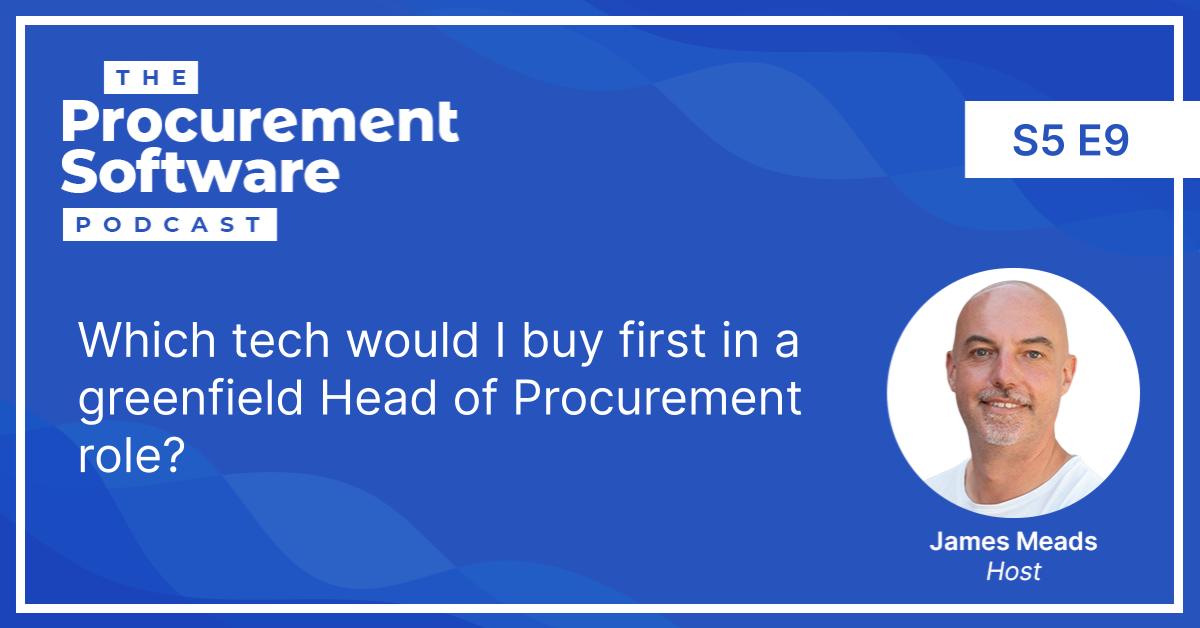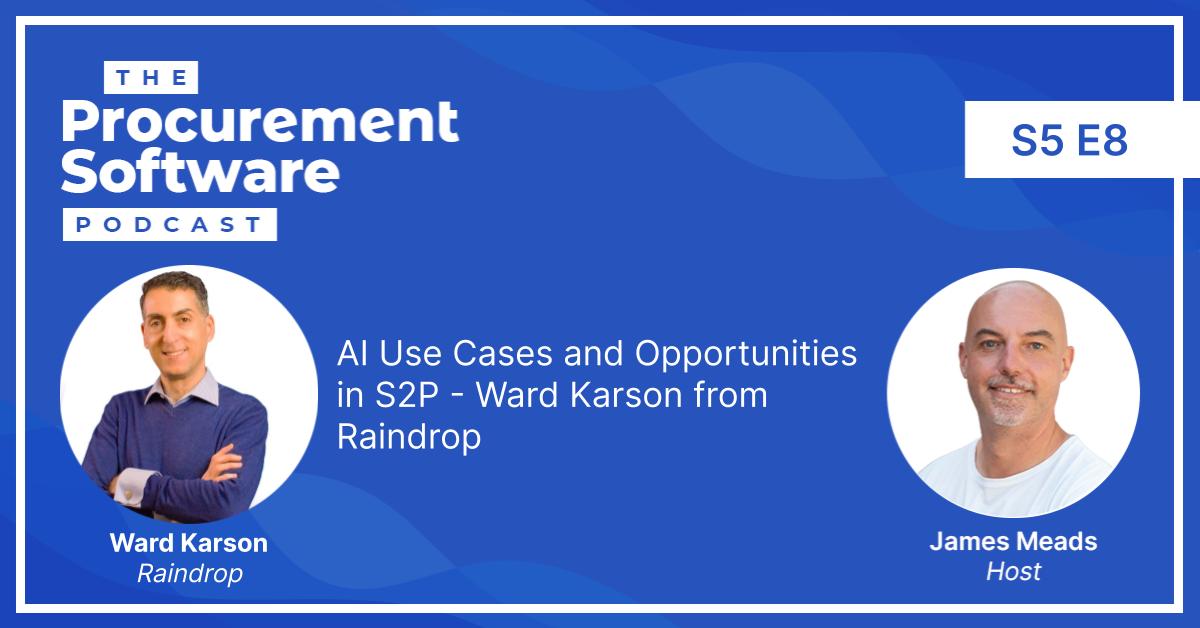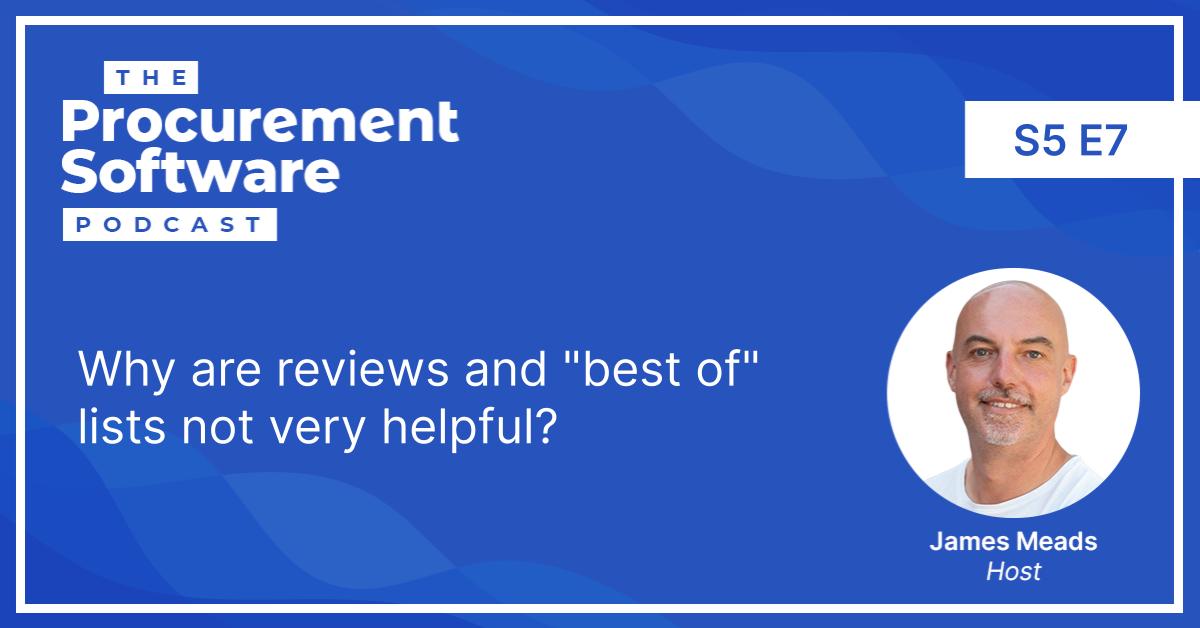This week we’re talking about supply chains. More specifically, where does the line lie between procurement and supply chain? Should we be concentrating on better understanding our multi-tiered complex chains, rather than just purchasing software to better track and trace shipments?
Understanding the value of pre-emptive end-to-end supply chain management
It’s a bit of a loaded question, but I’m sure we’re going to have a great debate today as we welcome an expert in the logistics and supply chain field, Tobias Larsson from Altana.ai.
I welcome Tobias to the podcast, and ask him for a little bit of background before we dive into the bulk of this week’s show.
Tobias explains how he began his career in supply chain logistics with DHL. Starting as a management trainee, he’d take calls in customer service. This let him learn the nuts and bolts of the business before moving into working in freight, then in innovation at DHL.
In 2011, just after the earthquake in Japan, he helped DHL develop a supply chain risk solution called Resilience 360. Eventually, this was spun out of DHL into its own business. Then, about a year ago, he left that organisation to join Altana.ai.
He goes on to explain how Altana’s mission is to create a living map of global supply chains. He sees it like the Google Maps of b2b commerce, giving customers multi-tiered visibility of supply chain networks by using a broad pool of datasets, all stitched together with AI. Of course, this kind of risk awareness is only becoming more valuable in our current geopolitical situation, be it due to COVID, or other disruptions to global supply chains.
The future of supply chains – Just-in-time vs. Just-in-case
I say that, in future, it’s clear we’ll need greater communication between corporate procurement at a strategic level, and local procurement at a more operational level. I ask Tobias, if he’s starting to see a move away from procurement reporting into the CFO or a business unit, and instead reporting into supply chain, or the COO?
He says yes, definitely. And goes on to describe how procurement has been a very strict process in companies, historically, acting almost as a policing faction. But now, looking at trends in the “new supply chain normal”, we’ve got bottlenecks, capacity shortages, transport issues, and a war in Ukraine.
It’s going to take time to get back to where we were before, with just-in-time supply chains, So now, pushing reliability upstream and expecting suppliers to deliver doesn’t really work any more. Pointing your finger at suppliers is meaningless if they can’t get access to the materials they need. It doesn’t work to expect them to deliver on short deadlines.
Collaboration and sharing responsibility
Tobias says things are changing into a more collaborative environment where you need to work together with suppliers to manage risk. Procurement isn’t a policing faction any more. Today’s challenges call for a trusted, responsive network, so that we can all be more strategic and nimble.
I ask Tobias to expand on the notion of near-shoring. Does he think that software like Altana.ai can offer the same kind of benefits? Could you keep a complex global supply chain in place while using that kind of software to mitigate risk? Or does he think a mix of both approaches is best?
He says that balance is the way forward, here. Reducing long supply lines is useful, and it’s worthwhile for companies to do that. But what Altana.ai focuses on is trust. Whether your suppliers are near or far, if you’re better able to detail your value chain, that’s going to have value. It’s about bringing them closer to your business in more ways than simple geography.
Will we ever see a return to the way things were?
I ask about inventory – does the shift away from Just-in-time to Just-in-case is going to become permanent?
Tobias thinks there’ll be a strong re-balancing. It’s more and more necessary to be mindful of your supply chains, and he thinks that a return to extreme JIT is unlikely.
I mention Brexit, and how we may expect to see more nationalistic policies in terms of trade, which is going to have an impact too.
Tobias agrees – supply chain has never become a national interest before. But policy makers are realising that supply chains are a vital means to maintaining security in the world. We’re going to see more legislation around not only locality, but ethics and sustainability too. He mentions the recent forced labour legislation in the US that prohibits some parts from China. Tomatoes, cotton, polysilicates, with each of these, you now have to prove that your suppliers are not part of forced labour activities.
I mention a new German supply chain law that puts responsibility on the end manufacturer to be responsible for their second and third tier suppliers too.
Tobias agrees – this comes into play in January 2023, and will absolutely demand deeper visibility.
I go back to his point about procurement being the policeman. Now it seems that policing is going to be more and more engaged with compliance. If there is an investigation, it’ll fall to procurement to prove that the company is innocent and compliant.
I ask Tobias if we should still be focusing on software that tracks cargo? Will there still be a need for that? Or if we focus on understanding our supply chains, will the need for that disappear?
Understanding your entire supply base – not just the first tier
He raises a recent study by McKinsey that shows some alarming results. Something like only 20% of businesses know anything about their Tier 2 suppliers. 3% know anything about their Tier 3. If you look at your Tier 1 suppliers, you should expect to have seven to seventeen times more suppliers in your total supply base. So you’re only looking at the tip of the iceberg if you focus only on Tier 1.
I’m not convinced that a lot of companies fully understand their Tier 1s either!
Tobias agrees. He reckons up to 50% of companies don’t really understand enough about where materials are actually produced. Visibility is lacking, all round and this needs to change.
On that note, I ask Tobias about technology in relation to risk management and predictive procurement. What can you focus on there? Some events seem impossible to predict – no software was going to forecast a war between Russia and Ukraine, for example. So what are the areas where software offers the most use?
Tobias’s mantra is that, while we can try to be proactive about things – for example eliminating dependencies – the key factor is always going to be your reactive capabilities. Some things are impossible to predict, so we need visibility and we need to be as responsive as we can. The more you understand, the faster you can adapt to changes.
What holds us back from embracing this technology?
It sounds like a no-brainer – so why aren’t companies banging down Tobias’s door to invest in this kind of thing?
He says this is a great question, and thinks it comes down to cost. Risk, historically, has felt secondary when it comes to investment priorities. Lack of talent is also a factor. This is a new area, and specialists are in short supply. It’s also about the data – if companies have grown through acquisition, there are so many layers that don’t speak to each other, it’s very difficult to organise that data into anything useful.
But that’s what he’s doing with Altana – getting that data organised and making it so companies are ready to achieve this kind of visibility. Data isn’t easy, but it is a required step if we’re going to make more sophisticated systems that can cope with this new normal.
I thank Tobias for his interesting company, and round off the podcast by asking how you listeners can learn more about Altana.ai.
Stay in touch!
- Connect with Tobias on LinkedIn
- Visit Altana’s website
- Visit ProcurementSoftware.site
- Sign up for the Procurement Software Newsletter
- Book an Intro Call and let’s talk all things Digital Procurement!
- Connect with James on LinkedIn
- Follow Procurement Software’s LinkedIn Page


